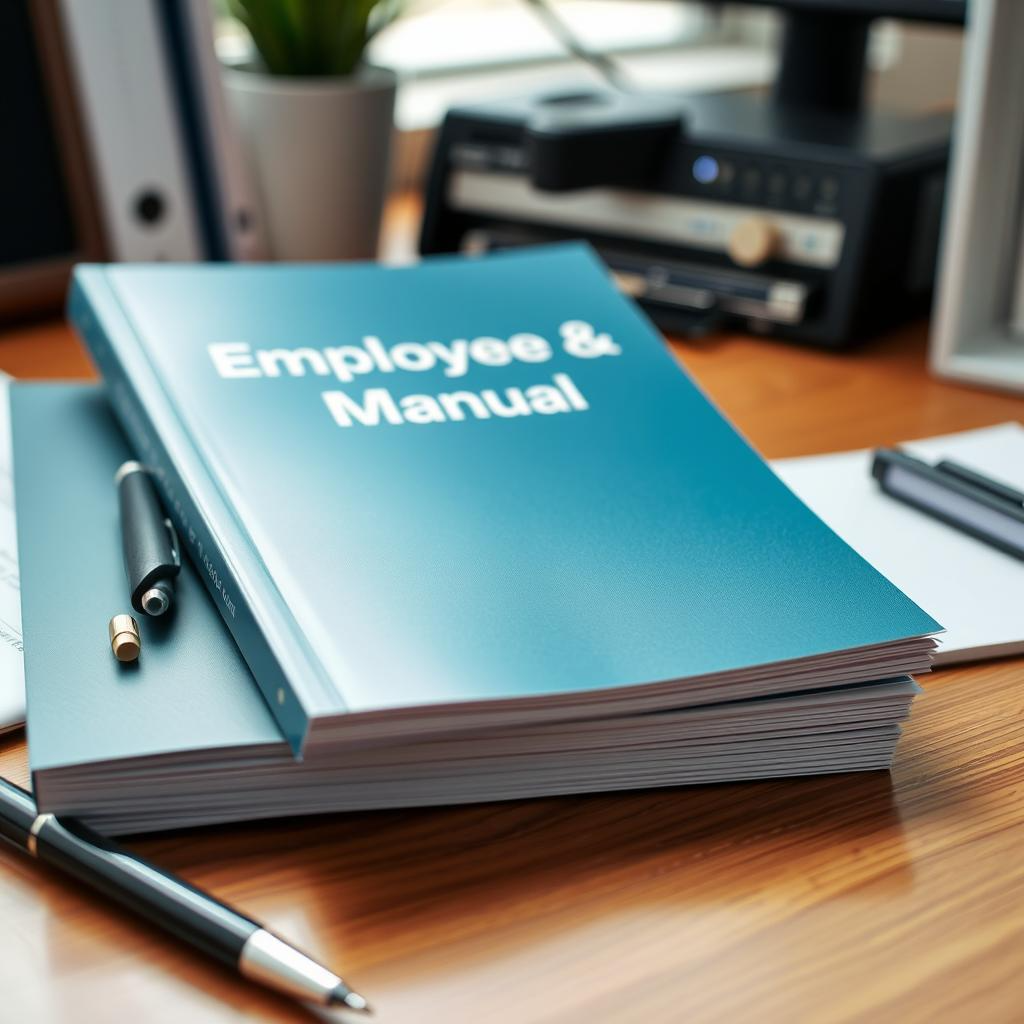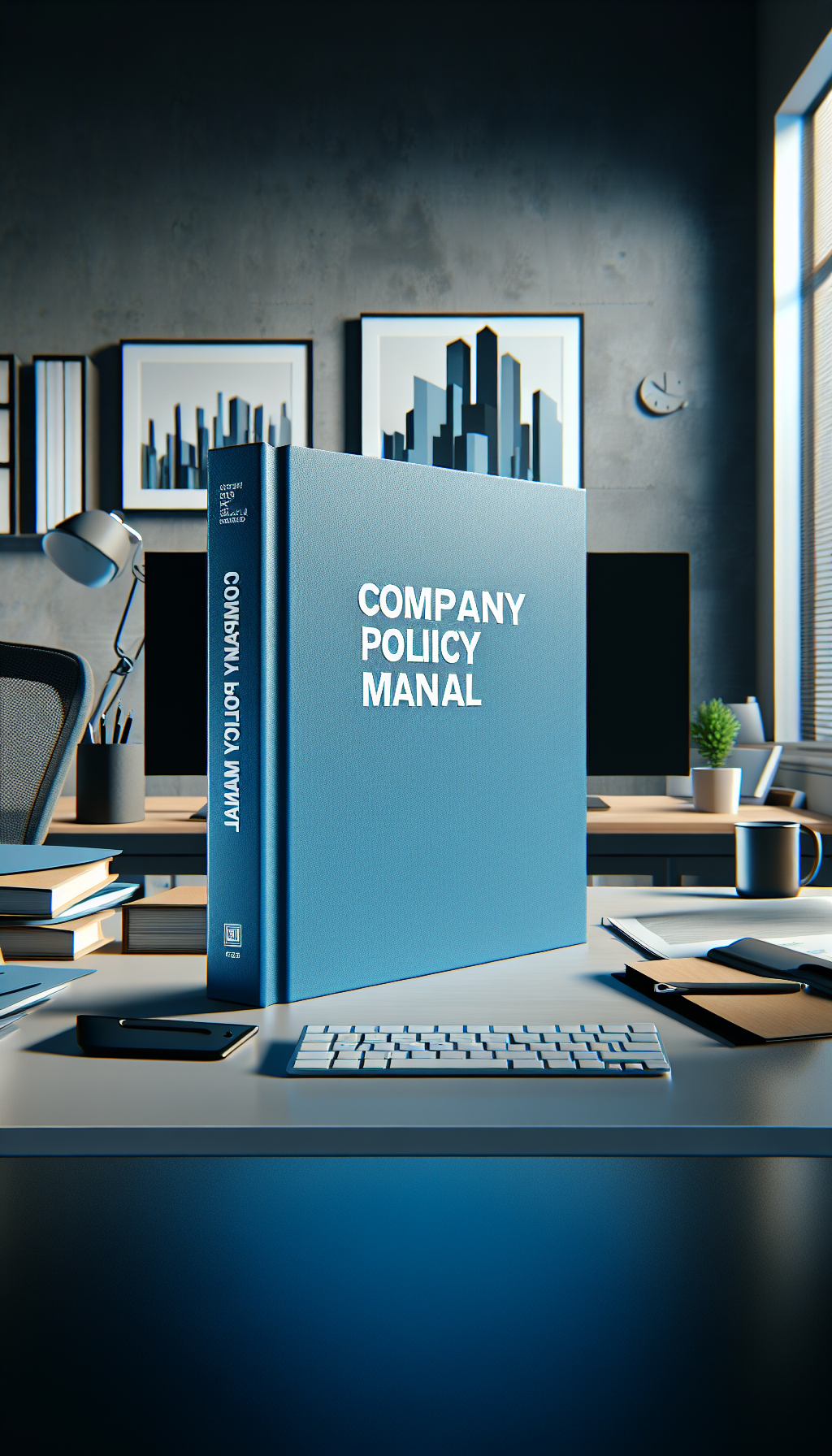2 Employee Lunch Break Policy Examples

As a new supervisor, manager, or even a new business owner, you face a myriad of responsibilities and decisions daily. Among the foundational elements for a smoothly operating and compliant business is a clear set of policies and procedures. One area that often prompts questions and requires specific guidelines is employee breaks, particularly the employee lunch break policy. Understanding and implementing a thorough policy isn't just about providing time for employees to eat; it's about legal compliance, fostering a positive work environment, and preventing misunderstandings. This article aims to provide you with invaluable information on the importance of comprehensive company policies and will present two distinct examples of an employee lunch break policy to guide your own development.
The Importance of Having a Thorough Employee Policy and
Procedures Manual

Every small or large business, regardless of its industry, stands to benefit immensely from a comprehensive Employee Policy and Procedures Manual (often called an Employee Handbook). This manual is far more than just a collection of rules; it is the cornerstone of your operational efficiency, legal compliance, and consistent employee relations.
Firstly, a well-drafted manual ensures legal compliance. Labor laws, such as the Fair Labor Standards Act (FLSA) in the United States, dictate requirements for breaks, overtime, minimum wage, and more. State laws often have additional, sometimes stricter, requirements regarding meal and rest breaks. Without a clear policy manual, your business is vulnerable to costly fines, lawsuits, and employee disputes stemming from non-compliance. Clearly articulating your company's employee lunch break policy within this manual is crucial for avoiding such pitfalls.
Secondly, a manual promotes consistency and fairness. When policies are written down, all employees are subject to the same rules, and all managers have clear guidelines for enforcement. This reduces the likelihood of favoritism or perceived unfair treatment, which can significantly damage employee morale and productivity. Imagine the confusion and resentment if different supervisors enforce varying rules for lunch breaks; a standardized employee lunch break policy eliminates this ambiguity.
Thirdly, it provides clarity and sets expectations. New hires, in particular, need to understand the company culture, their responsibilities, and expected behaviors from day one. A comprehensive manual acts as an essential onboarding tool, answering common questions and setting the stage for a productive working relationship. It clarifies what is expected concerning attendance, conduct, use of company property, and, crucially, how and when employees should take their breaks, including the employee lunch break policy.
Fourthly, a robust manual helps mitigate risks and disputes. Should an employee issue arise, whether it's related to performance, conduct, or a dispute over compensation, your manual serves as an objective reference point. It documents the established procedures for addressing such issues, protecting your business from potential legal challenges by demonstrating that you have clear, communicated policies in place. Having a documented employee lunch break policy can be vital evidence in wage and hour disputes.
Finally, an employee manual is a clear statement of your company's professionalism and values. It reflects a commitment to a well-organized and equitable work environment. It shows that you value your employees by providing them with the necessary information to succeed and operate within a clear framework. Remember, your policy manual is a living document that should be reviewed and updated regularly to reflect changes in laws, industry standards, or your business operations, including any revisions to your employee lunch break policy.
1st Employee Lunch Break Policy Example: Standard Unpaid
Meal Period

This policy is suitable for many businesses that require a consistent, unpaid meal period for eligible employees.
Policy Title: Standard Unpaid Meal Period Policy
Effective Date: [Date]
Purpose: To ensure that all eligible employees receive an uninterrupted meal period in accordance with federal and state labor laws, promoting employee well-being and consistent operational practices.
Scope: This policy applies to all non-exempt employees working shifts of a duration that qualifies for a meal period under applicable federal and state laws.
Eligibility:
Employees who work a shift of at least five (5) consecutive hours are eligible for an unpaid meal period of thirty (30) minutes.
Employees working shifts of six (6) consecutive hours or more are required to take an unpaid meal period of sixty (60) minutes.
These meal periods are generally mandatory unless a specific state law or mutual written agreement (where legally permissible) allows for a waiver.
Timing of Meal Period:
Meal periods must be taken no later than the start of the fifth hour of work for a 30-minute break, or by the start of the sixth hour for a 60-minute break. For example, if an employee starts at 9:00 AM and is due a 30-minute meal period, it must begin no later than 2:00 PM.
Supervisors will schedule meal periods to ensure adequate coverage and operational continuity, but always within the legal timing requirements. Employees should not begin work more than five hours without a meal break.
Unpaid and Uninterrupted:
Meal periods are unpaid time; employees are relieved of all duties and are free to leave the premises.
Employees are not permitted to perform any work-related tasks during their meal period. If an employee is required or permitted to perform any work during their meal period, the entire period will be considered paid work time.
If an employee’s meal period is interrupted for business reasons, they must immediately notify their supervisor. The interrupted time will be paid, and the employee will be afforded a full, uninterrupted meal period as soon as practicable.
Punching In/Out:
Employees are required to accurately punch out at the start of their meal period and punch back in upon its conclusion using the designated timekeeping system. Failure to accurately record time may result in disciplinary action.
Designated Areas:
Employees are welcome to use the designated break room or leave the premises during their meal period. Please ensure personal belongings are secured, and break areas are kept clean.
Non-Compliance:
Failure to adhere to this employee lunch break policy, including taking unauthorized breaks, extending meal periods, or failing to punch in/out correctly, may result in disciplinary action, up to and including termination of employment.
If you believe your meal period rights are being violated, you must immediately report it to your supervisor or HR Department.
2nd Employee Lunch Break Policy Examples: Flexible Paid and
Unpaid Meal Options

This policy offers more flexibility, perhaps for a modern company culture or specific industry where brief interruptions are common, or where state law allows for paid meal breaks under certain conditions.
Policy Title: Flexible Meal and Rest Break Policy
Effective Date: [Date]
Purpose: To provide employees with necessary breaks for rest and meals while maintaining operational efficiency, offering clear guidelines for both paid and unpaid break periods in compliance with all applicable labor laws.
Scope: This policy applies to all non-exempt employees of [Company Name].
Break Entitlements Overview:
Paid Rest Breaks: Employees working shifts of at least 3.5 hours are entitled to a fifteen (15) minute paid rest break for every four (4) hours worked or major fraction thereof. These breaks should be taken in the middle of a work period, to the extent practicable.
Unpaid Meal Period (30 Minutes): Employees working shifts of at least five (5) consecutive hours are entitled to an unpaid, uninterrupted thirty (30) minute meal period.
Paid Meal Period (if qualifying): In certain circumstances, where an employee is not entirely relieved of duties during their meal period due to the nature of the job (e.g., they must remain on-call or at their workstation), the meal period may be designated as a paid, on-duty meal period. This must be pre-approved by a direct supervisor and HR, and explicitly documented.
Scheduling Breaks:
Supervisors will work with their teams to schedule breaks to minimize disruption to work flow and ensure adequate coverage. Employees should communicate their intended break times to their supervisor.
Paid rest breaks generally cannot be combined or added to a meal period, nor can they be used to offset a late start or early departure.
Unpaid meal periods must be taken by the end of the fifth hour of work.
Nature of Breaks:
Paid Rest Breaks: Employees are relieved of duties for 15 minutes but must remain on the premises or within reasonable proximity to return to work quickly if needed.
Unpaid Meal Periods: Employees must be completely relieved of all duties and are free to leave the premises. They are not to perform any work-related activities. If an employee's unpaid meal period is interrupted by work duties, they must immediately inform their supervisor. The full period will be paid, and a new, uninterrupted meal period will be provided as soon as possible.
Paid On-Duty Meal Periods: If an employee is approved for an on-duty meal period, they are paid for this time, but their availability to perform duties is required. These are only granted under specific operational necessities and with management approval.
Timekeeping:
Employees are required to punch out for all unpaid meal periods and punch back in upon their return. Paid rest breaks do not require punching out/in.
Accurate timekeeping is essential for compliance with this employee lunch break policy. Any discrepancies or issues should be reported to your supervisor immediately.
Responsibilities and Compliance:
Employees are responsible for taking their breaks at the scheduled times and adhering to the guidelines of this employee lunch break policy.
Supervisors are responsible for ensuring employees take their legally mandated breaks and for scheduling them appropriately.
Failure to comply with this policy, including habitual late returns from breaks, not taking mandated breaks without proper waiver (where applicable), or misrepresenting time, will result in disciplinary action up to and including termination.
Conclusion

Developing and maintaining a thorough Employee Policy and Procedures Manual, with a clearly articulated employee lunch break policy, is not just a regulatory obligation; it is a strategic investment in the success and sustainability of your business. For new supervisors, managers, and business owners, understanding and implementing these policies provides a framework for fair, consistent, and legally compliant operations.
By establishing clear expectations around critical areas like the employee lunch break policy, you empower your employees with knowledge, reduce the potential for disputes, and protect your business from unnecessary risks. Take the time to tailor these policy examples to your specific industry, state laws, and company culture. Remember to involve legal counsel in reviewing your manual to ensure full compliance. A well-defined policy manual will serve as an invaluable resource, guiding your team towards a productive and harmonious work environment, and allowing you to lead with confidence and clarity.